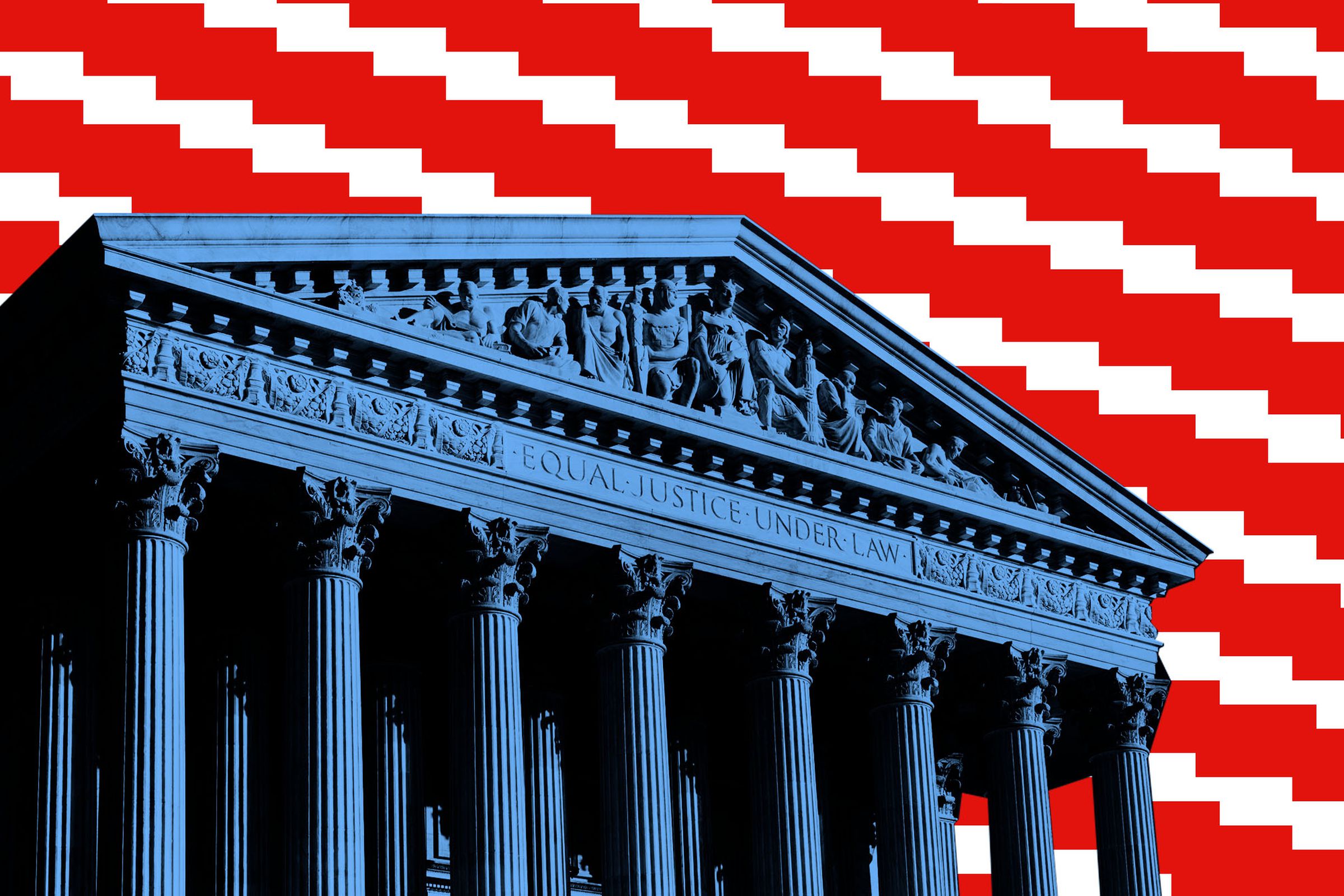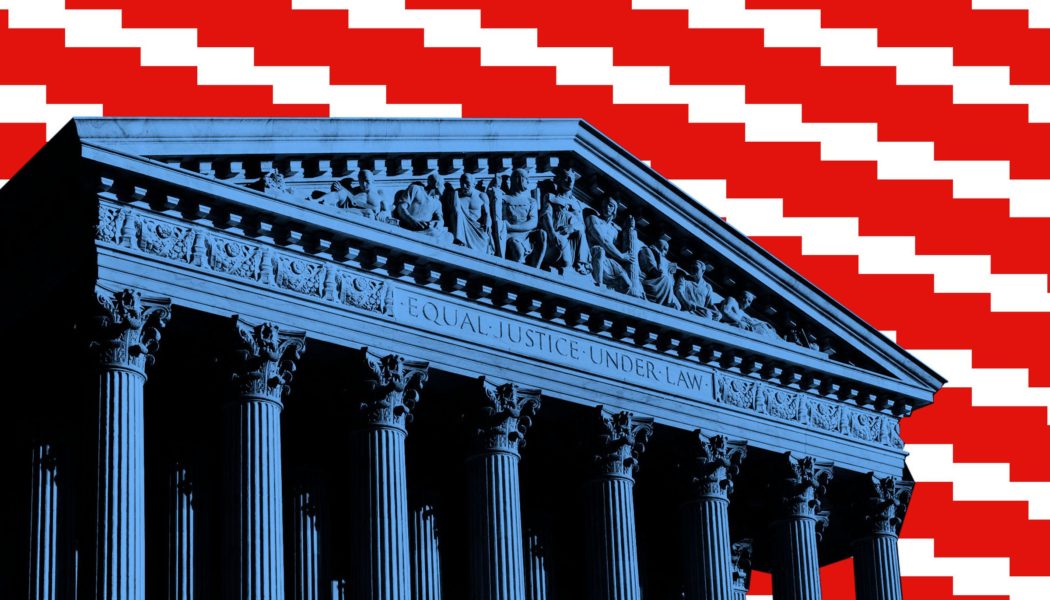A cornerstone of US efforts to tackle climate change is in the hands of the Supreme Court again.

The Supreme Court could stall action on climate change yet again as it weighs whether to pause new pollution regulations for coal-fired power plants.
The Environmental Protection Agency (EPA) finalized rules this year aimed at curbing greenhouse gas emissions from coal plants. But red states and industry groups are challenging the EPA in court and have asked SCOTUS to step in and stop the rules from being implemented while they duke it out.
The request is now in the Supreme Court’s so-called “shadow docket” — meaning SCOTUS can essentially issue a stay on the rules at its whim. The court has already made it way tougher for federal agencies to regulate industry since Donald Trump packed it with conservative-leaning justices. This is another opportunity to gut the EPA’s efforts to limit the pollution causing climate change.
“I would have considered this kind of request laughable just a few years ago, but given the way this court is operating — I don’t laugh at anything anymore,” says Sambhav Sankar, senior vice president for programs at the nonprofit environmental law organization Earthjustice.
The rules are a cornerstone of the Biden administration’s efforts to meet climate goals set under the Paris agreement. They require coal plants expected to continue operating for at least 15 years to reduce their climate pollution by 90 percent. Coal happens to be the dirtiest fossil fuel, creating more planet-heating carbon dioxide when burned than oil or gas.
When the EPA finalized the plan in April, it was arguably only a partial victory for environmental and health advocates. The rules had to comply with the Supreme Court’s 2022 decision on West Virginia v. Environmental Protection Agency. It was a monumental opinion that strengthened the “major questions” doctrine, the idea that federal agencies shouldn’t have the authority to call the shots on issues of major national significance without Congress passing legislation explicitly allowing the agency to do so. The decision meant that the EPA wouldn’t be allowed to determine whether the US gets its electricity from fossil fuels or cleaner sources of energy like wind and solar.
As a result, the EPA’s plans to rein in the greenhouse gas emissions allow fossil fuel power plants to keep running as long as they install technologies that capture carbon dioxide emissions. Fossil fuel companies have championed carbon capture and storage as a way to fight climate change without having to give up coal, oil, or gas. But relying on carbon capture lets down health and environmental advocates who had hoped that a transition to renewable energy would fight climate change and push utilities to phase out fossil fuel plants that spew soot and other kinds of pollutants into nearby neighborhoods.
Now, industry is arguing that carbon capture and storage (CCS) technologies aren’t even ready to help fight climate change — at least not to the degree the EPA says is feasible in its power plant rules. Since July, trade groups representing utilities and mining companies and a smattering of red states, led by West Virginia and Ohio, have filed applications asking the Supreme Court to issue a stay on the EPA’s new rules for CO2 emissions (as well as separate rules for hazardous pollutants, including mercury).The US Court of Appeals for the District of Columbia Circuit previously declined to issue a stay.
The petitioners argue that capturing 90 percent of CO2 isn’t an achievable goal yet — that the technology hasn’t been demonstrated at that scale and that there aren’t pipelines in place to transport and store the greenhouse gas safely once it’s been captured.
“With no way to comply with the 90% CCS system, the Rule requires operators to shift electricity generation,” the National Rural Electric Cooperative Association says in its application for a stay. “EPA is once again trying to transform the power sector by forcing a shift in electricity generation to its favored sources.” They’re basically invoking the major questions doctrine again to challenge the new rules.
The Biden administration defended the EPA’s rules in a response filed to the Supreme Court this week, saying that the agency has vetted the technology and set achievable carbon capture goals. The case “does not involve the type of fundamental statutory-interpretation issue that might warrant this Court’s intervention,” the EPA argues. And it points out that a federal appeals court chose not to issue a stay on the matter last month, in a decision that says the litigants haven’t shown that they’ll be able to successfully challenge the merits of the rule, nor that the case involves a “major question.” Moreover, deadlines to comply with the rules don’t kick in until 2030 or 2032 — making it hard for the petitioners to show that they’d suffer “irreparable harm” without a stay.
Nevertheless, the groups have since asked the Supreme Court to issue a stay through its emergency — or shadow — docket. The emergency docket, once reserved for extremely time-sensitive issues like staying executions, is now crowded with requests to pause environmental regulations. It’s an expedited process, allowing the court to issue decisions without much briefing on the issue or hearing oral arguments on the case.
“Many lawyers and others find it deeply disturbing,” says Michael Gerrard, founder and faculty director of Columbia University’s Sabin Center for Climate Change Law. “The Supreme Court can do something colossally important without the full information in front of it.”
It’s a trend that’s grown since 2016 when the Supreme Court issued a surprise stay on the Obama administration’s attempt at regulating greenhouse gas emissions from power plants. The Obama-era rules never went into effect and were eventually rolled back by the Trump administration.
Now, history could repeat itself. Donald Trump has pledged to throw out power plant emissions rules once again on the presidential campaign trail. And the Supreme Court can decide at any moment whether to grant the stay. Their decision could potentially influence the casethe US Court of Appeals for the DC Circuit is still considering over whether the rules should be struck down altogether.
SCOTUS’s decision on the stay could potentially also influence new rules the EPA is still crafting for existing gas-fired power plants that make up a bigger source of electricity than coal in the US. Those rules aren’t expected until after the November elections, giving Trump another chance to reverse course.
“I think what will be more relevant will be the outcome of the coming election,” Sankar says. Then again, the Supreme Court has shocked the legal community with landmark decisions lately that hamstring the EPA’s ability to craft regulation. In June, it overturned a legal doctrine called Chevron deference that previously allowed federal courts to defer to the EPA and other federal agencies in disputes over how to interpret ambiguous language in legislation.
“If the untrained, unscientific judges of the Supreme Court show that they are once again willing to second guess the scientists at EPA, then it will be understandable if those scientists get a little more gun shy,” Sankar says.









